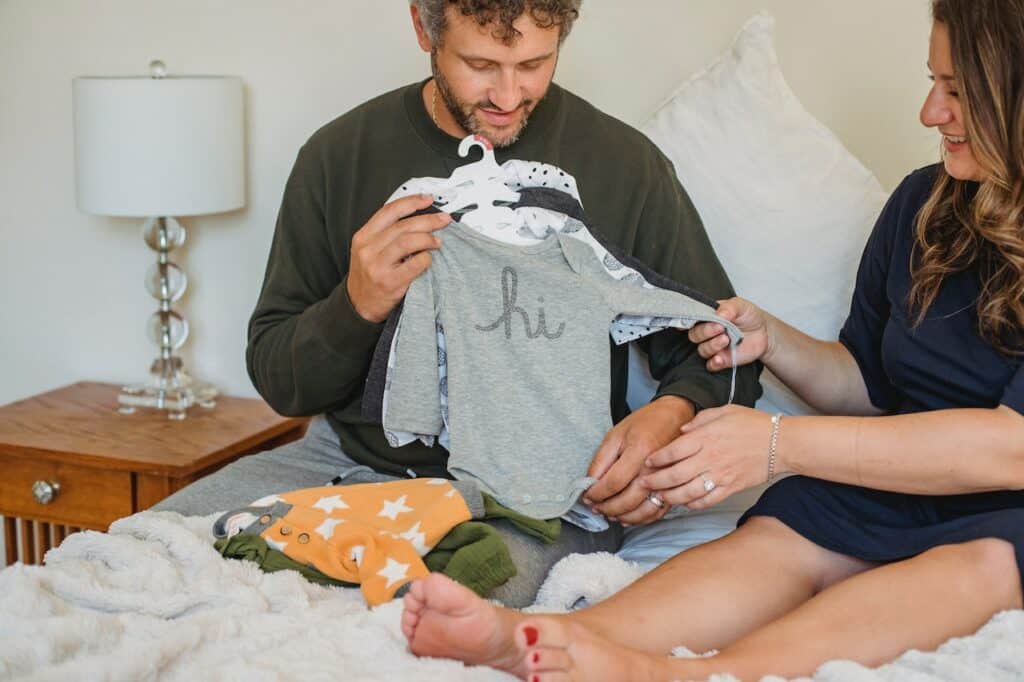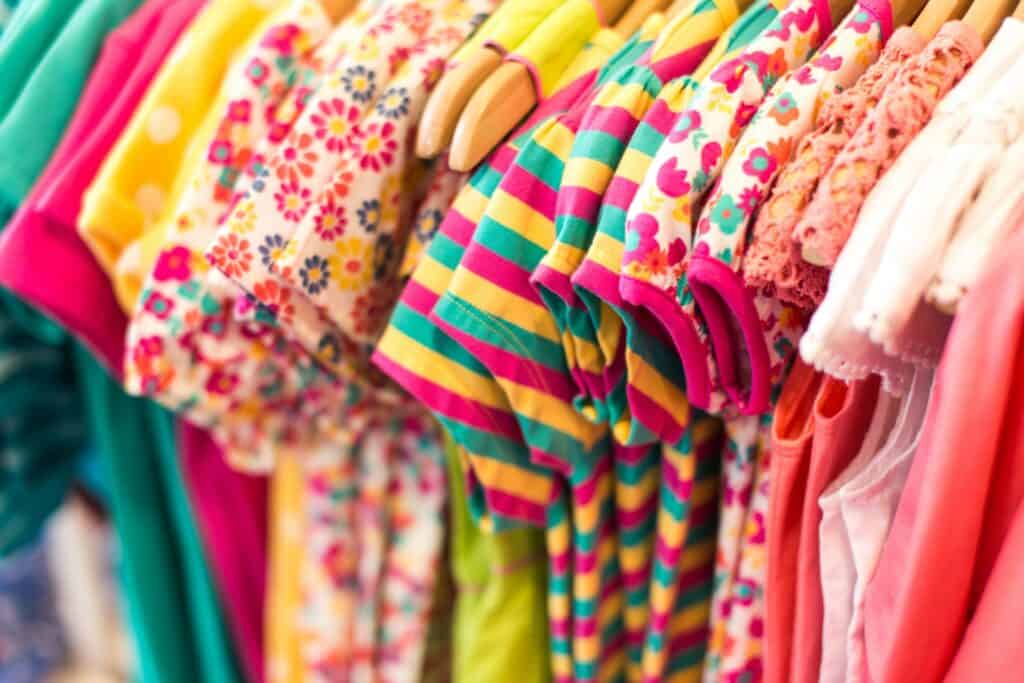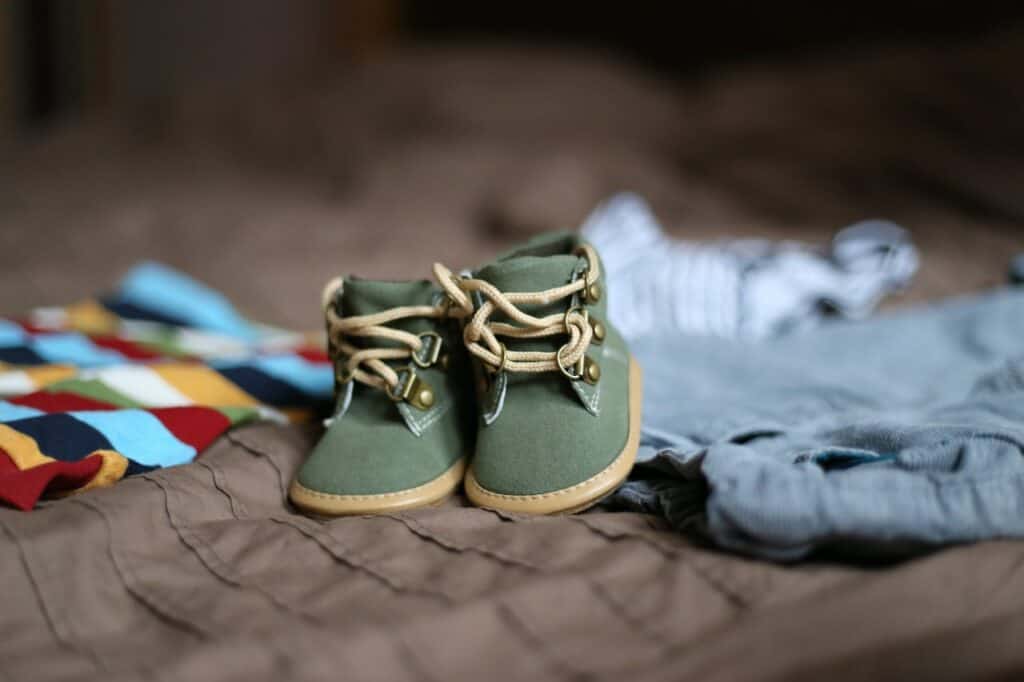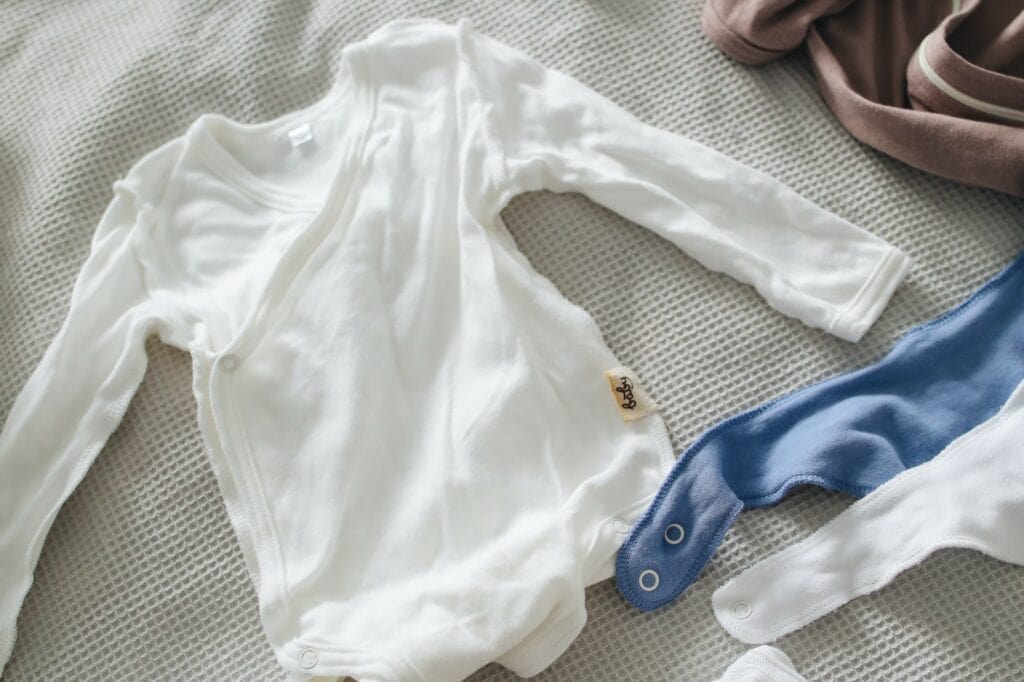Parents often find themselves confused when it comes to toddler sizes, particularly when their child reaches size 5T. While this size is designed to fit children who weigh between 40 and 46 pounds and stand between 42 and 44 inches tall, many parents wonder what size comes after 5T. Understanding toddler sizes and the different size categories available can help parents find the right fit for their child.
Size 5T is a common size for children who are not quite ready for regular children’s sizes but have outgrown toddler sizes. However, after 5T, the sizing system can vary depending on the brand and the clothing item. Some brands may offer size 6 or size 7, while others may use XS or S. It’s important to check the sizing chart for each brand and item to ensure the best fit for your child.
Key Takeaways
- Size 5T is designed for children who weigh between 40 and 46 pounds and stand between 42 and 44 inches tall.
- After 5T, the sizing system can vary depending on the brand and the clothing item.
- Checking the sizing chart for each brand and item can help parents find the best fit for their child.
Understanding Toddler Sizes
When it comes to dressing your little one, it’s important to understand toddler sizes. Toddler sizes are typically labeled with a “T” after the number, which stands for “toddler”. The most common toddler size is 2T, which fits children who are around two years old. But what size comes after 5T?
After 5T, children’s sizes typically transition to youth sizes, which are based on age rather than measurements. However, some brands may offer larger toddler sizes, such as 6T or 7T, which are designed to fit children who are around six or seven years old.
It’s important to note that toddler clothing sizes can vary between brands and even within the same brand. To ensure the best fit, it’s recommended to refer to a toddler size chart provided by the brand. These charts typically list measurements for the chest, waist, and hips, as well as the corresponding toddler size.
When shopping for toddler clothes, it’s also important to consider the child’s height and weight, as well as their individual body shape. Some children may fit better in a larger or smaller size than their age would suggest.
In summary, after 5T, children’s sizes typically transition to youth sizes, but some brands may offer larger toddler sizes. To ensure the best fit, refer to a toddler size chart and consider the child’s individual body shape.
Size 5T Details
Size 5T is a popular clothing size for toddlers who have outgrown size 4T but are not yet ready for size 6. It is designed to fit children who are approximately 4-5 years old and weigh between 38-42 pounds and are around 42-44 inches tall.
When it comes to fit, size 5T is typically roomier than size 5 and has a slightly longer length in the torso and sleeves. It is important to note that the fit can vary between brands, so it is recommended to check the specific brand’s size chart before purchasing.
In terms of comfort, size 5T clothing should allow for ease of movement and not be too tight or restrictive. It is important to choose clothing made from soft and breathable fabrics to ensure comfort for the child.
Overall, size 5T is a great option for toddlers who have outgrown size 4T and are not yet ready for size 6. With proper fit and comfortable materials, clothing in this size can help children feel confident and comfortable as they continue to grow and explore the world around them.
What Comes After Size 5T
When it comes to children’s clothing sizes, parents may find themselves confused about what size to purchase for their growing child. After size 5T, the next size is typically size 6.

Size 6 is designed for children who are around 6 years old and have a height of approximately 45-47 inches and a weight of around 46-50 pounds. It is important to note that sizing can vary between brands, so it is always best to check the size chart provided by the specific brand before making a purchase.
Another size that may be seen after 5T is size 6X. This size is typically designed for girls and is similar to size 6, but with a slightly larger fit in the chest and waist areas. It is important to note that not all brands carry size 6X, so parents may need to search for specific brands that offer this size.
For children who are in between sizes, some brands offer a 6/7 size, which typically fits children who are around 6-7 years old and have a height of approximately 48-50 inches and a weight of around 50-54 pounds. This size allows for a bit more room for growth and can be a good option for parents who want to get more wear out of their child’s clothing.
In summary, after size 5T, the next size is typically size 6, with size 6X being a slightly larger option for girls. Some brands also offer a 6/7 size for children who are in between sizes. As always, it is important to check the size chart provided by the specific brand before making a purchase to ensure the best fit for your child.
Comparing Size Categories
When it comes to children’s clothing, size categories can be confusing, especially when transitioning from toddler sizes to regular sizes. After 5T, the next size category is typically a size small (S), but this can vary depending on the brand and clothing item.
To better understand size categories, it’s helpful to compare them to each other. Here is a breakdown of common size categories and their corresponding measurements:
- XS (Extra Small): Generally fits children ages 4-5 years old and has a chest measurement of 22-23 inches and a waist measurement of 21-21.5 inches.
- S (Small): Generally fits children ages 6-7 years old and has a chest measurement of 24-25 inches and a waist measurement of 22-22.5 inches.
- M (Medium): Generally fits children ages 8-10 years old and has a chest measurement of 26-27 inches and a waist measurement of 23-24 inches.
- L (Large): Generally fits children ages 12-14 years old and has a chest measurement of 28-30 inches and a waist measurement of 25-26 inches.
It’s important to note that these measurements are just a general guide and can vary depending on the brand and clothing item. It’s always best to refer to the specific brand’s size chart for the most accurate sizing information.
In conclusion, after 5T, the next size category is typically a size small (S). However, it’s important to compare size categories and refer to brand-specific size charts for the most accurate sizing information.
Brand Specific Sizing
Different brands use different sizing charts, which can make it difficult for parents to figure out what size to buy for their child. Here’s a breakdown of how some popular brands size their clothing, including Old Navy, Target, Carter’s, and a European brand.

Old Navy uses a combination of numbers and letters to indicate their sizes. For example, 5T is followed by size 5, then size 6. After size 6, they switch to regular numeric sizing (7, 8, 10, etc.). It’s important to note that Old Navy’s sizing tends to run on the larger side, so if your child is in between sizes, it’s usually best to go with the smaller size.
2. Target
Target’s sizing is similar to Old Navy’s, with 5T followed by size 5, then size 6. However, after size 6, they switch to odd-numbered sizes (7, 9, 11, etc.). Target’s sizing also tends to run large, so keep that in mind when selecting sizes.
3. Carter’s
Carter’s uses a traditional sizing chart that goes from 2T to size 14. After 2T, they switch to regular numeric sizing (3, 4, 5, etc.). Carter’s sizing tends to run true to size, so you can usually trust their sizing chart when selecting sizes.
4. European Brand
European brands often use different sizing charts than American brands, so it’s important to pay attention to the measurements provided. For example, a European size 110 is roughly equivalent to a US size 5T. It’s always a good idea to measure your child and compare those measurements to the brand’s sizing chart before making a purchase.
Overall, understanding brand-specific sizing can help parents make more informed decisions when shopping for their child’s clothing. By paying attention to each brand’s sizing chart and measuring your child when necessary, you can ensure a better fit for your little one.
Measurement Guidelines
When it comes to children’s clothing, it’s important to know what size will fit them best. After the 5T size, the next size up is typically a size 6. However, it’s important to keep in mind that sizing can vary between brands, so it’s always a good idea to check the specific brand’s size chart before making a purchase.

1. Height and Weight
Height and weight are important factors to consider when determining what size will fit a child best. Generally, a size 6 is designed to fit a child who is around 45-48 inches tall and weighs around 45-50 pounds. However, again, it’s important to check the specific brand’s size chart for accurate measurements.
2. Waist and Measurements
When it comes to waist measurements, a size 6 typically fits a child with a waist measurement of around 22-23 inches. However, it’s always a good idea to measure the child’s waist and compare it to the brand’s size chart to ensure the best fit.
3. Chest and Hips
For chest and hip measurements, a size 6 is typically designed to fit a child with a chest measurement of around 25-26 inches and hip measurement of around 27-28 inches. Again, it’s important to check the specific brand’s size chart for accurate measurements.
4. Body Measurements
In addition to height, weight, waist, chest, and hip measurements, it’s also important to consider other body measurements when determining what size will fit a child best. Some brands may provide additional measurements, such as arm length or inseam length, to help ensure the best fit.
Overall, when it comes to determining what size comes after 5T, a size 6 is typically the next size up. However, it’s important to check the specific brand’s size chart for accurate measurements and to consider factors such as height, weight, waist, chest, hips, and other body measurements to ensure the best fit for the child.
Understanding Clothing Sizes
When it comes to kids’ clothing, sizing can be a bit confusing. Parents often wonder what size comes after 5T, and how to choose the right size for their child. Understanding clothing sizes is essential to ensure that your child feels comfortable and confident in their clothes.
Kids’ clothing sizes are based on age, height, and weight. However, these measurements can vary depending on the brand and style of clothing. It’s important to check the size chart for each item of clothing before purchasing.
Size 5 is typically for children who are around 5 years old, with a height of 42-44 inches and a weight of 37-42 pounds. After size 5, the next size is usually size 6. However, some brands may use different sizing systems, so it’s always best to check the size chart.
When shopping for kids’ clothing, it’s important to consider the child’s body shape and size. Some kids may be taller or shorter than average, or have a different body shape. In these cases, it may be necessary to choose a different size or style of clothing to ensure a comfortable fit.
In addition to size, it’s also important to consider the style and fabric of the clothing. Some styles may be more fitted or loose, while some fabrics may be stretchy or non-stretchy. It’s important to choose clothing that is appropriate for the child’s age, activities, and preferences.
Overall, understanding kids’ clothing sizes can help parents choose the right size and style of clothing for their child. By considering the child’s age, height, weight, body shape, and preferences, parents can ensure that their child feels comfortable and confident in their clothes.
Size Charts and Sizing Charts
When it comes to buying clothes for children, it can be challenging to know what size to choose. Children grow quickly, and their clothing sizes can change rapidly. One common size that parents often encounter is 5T. But what size comes after 5T? Let’s take a look at some sizing charts to find out.

Sizing Charts
Sizing charts are a useful tool for determining the right size for your child. Most clothing brands have their own sizing charts, so it’s essential to check the chart for the specific brand you’re considering. Here is an example of a kids’ clothing size chart that you might find helpful:
| Size | Height (inches) | Weight (pounds) |
|---|---|---|
| 2T | 33-36 | 24-29 |
| 3T | 36-39 | 29-33 |
| 4T | 39-42 | 33-36 |
| 5T | 42-45 | 36-40 |
| 6 | 45-48 | 40-46 |
| 7 | 48-51 | 46-53 |
| 8 | 51-54 | 53-60 |
| 10 | 54-57 | 60-72 |
| 12 | 57-60 | 72-84 |
| 14 | 60-63 | 84-97 |
| 16 | 63-66 | 97-110 |
As you can see, the sizes after 5T are 6, 7, 8, 10, 12, 14, and 16. However, it’s important to remember that sizing can vary between brands, so always check the specific brand’s sizing chart before making a purchase.
Size Charts
Another helpful tool for determining the right size for your child is a size chart. Size charts provide measurements for different parts of the body, such as chest, waist, and hips. Here is an example of a size chart for a popular children’s clothing brand:
| Size | Chest (inches) | Waist (inches) | Hips (inches) |
|---|---|---|---|
| 2T | 20 | 19 | 21 |
| 3T | 21 | 20 | 22 |
| 4T | 22 | 21 | 23 |
| 5T | 23 | 22 | 24 |
| 6 | 24 | 22.5 | 25 |
| 7 | 25 | 23 | 26 |
| 8 | 26 | 23.5 | 27 |
| 10 | 28 | 24.5 | 29 |
| 12 | 30 | 25.5 | 31 |
| 14 | 32 | 26.5 | 33 |
| 16 | 34 | 27.5 | 35 |
Using a size chart can be especially helpful if your child’s measurements don’t match up with their age or height. Again, it’s crucial to check the specific brand’s size chart as sizing can vary.
In summary, the sizes that come after 5T are 6, 7, 8, 10, 12, 14, and 16. Sizing charts and size charts can be helpful tools for determining the right size for your child, but it’s important to check the specific brand’s charts as sizing can vary.
Specific Clothing Items
When it comes to children’s clothing, sizing can be confusing. After the 5T size, the next size is typically a youth size, which is labeled as XS or Extra Small. However, not all clothing brands follow this sizing convention, so it’s important to check the specific size chart for each brand before making a purchase.

For tops, XS or Extra Small is equivalent to a size 6-7 in children’s clothing. This size is generally recommended for children between the ages of 6 and 7 years old. However, as mentioned earlier, it’s important to check the size chart for each brand as sizing can vary.
For bottoms and pants, XS or Extra Small is equivalent to a size 4-5 in children’s clothing. This size is generally recommended for children between the ages of 4 and 5 years old. Again, it’s important to check the size chart for each brand before making a purchase.
When it comes to shirts, XS or Extra Small is equivalent to a size 7 in children’s clothing. This size is generally recommended for children between the ages of 7 and 8 years old. However, as with all clothing items, it’s important to check the size chart for each brand to ensure the best fit.
For pajamas, XS or Extra Small is equivalent to a size 6-7 in children’s clothing. This size is generally recommended for children between the ages of 6 and 7 years old. It’s important to note that pajama sizing can vary greatly between brands, so it’s always best to check the size chart before making a purchase.
Overall, it’s important to remember that sizing can vary between brands and even between different styles within the same brand. Checking the size chart and measuring your child’s height and weight can help ensure the best fit for your child.
Other Considerations
When it comes to children’s clothing sizes, there are a few other factors to consider beyond just the numerical sizing. Here are some things to keep in mind when shopping for clothes for your child:

1. Activity Level
If your child is particularly active, you may want to consider buying clothes that are a bit roomier to allow for greater freedom of movement. This is especially important for toddlers who are still learning to walk and run.
2. Potty Training
If your child is in the process of potty training, you may want to opt for clothes that are easy to take on and off quickly. Look for pants with elastic waistbands or snap closures, and avoid clothing with lots of buttons or zippers.
3. First-Time Moms
If you’re a first-time mom, you may be unfamiliar with the sizing conventions used for children’s clothing. Don’t be afraid to ask for help from a sales associate or consult a sizing chart to ensure you’re buying the right size for your child.
4. Growth Spurts
Children grow quickly, and it’s not uncommon for them to outgrow clothing in just a few months. When shopping for clothes, consider buying items that are a bit larger than your child’s current size to allow for growth.
5. Regular 5 vs. 5T
While 5 and 5T may seem like they’re the same size, there are some key differences to keep in mind. 5T clothing is designed for children who are still in diapers, so it tends to have a bit more room in the seat and thighs. Regular 5 clothing is designed for potty-trained children.
6. Kid Sizes
Children’s clothing sizes can vary widely depending on the brand and manufacturer. Always consult a sizing chart or try items on in-store to ensure the best fit for your child.
Related: What Does 3T Size Mean
Frequently Asked Questions
What size comes after 5T in children’s clothing?
After 5T, the next size in children’s clothing is usually a size 6. However, some brands may skip size 6 and go straight to size 7.
What is the next size up from 5T?
The next size up from 5T is usually a size 6. However, some brands may skip size 6 and go straight to size 7.
Is there a 6T size available?
No, there is no standard 6T size in children’s clothing. Some brands may use this size as an alternative to size 6, but it is not a widely recognized size.
How does 5T compare to youth small?
5T is typically smaller than youth small. Youth small is usually designed for children who are around 6-8 years old, while 5T is designed for toddlers who are around 5 years old.
What is the difference between 5T and XS?
5T and XS are both small sizes, but 5T is designed for toddlers while XS is designed for older children or adults. XS is usually larger than 5T.
What size is 5T equivalent to in small or medium?
5T is equivalent to a small in children’s clothing. It is usually designed for children who weigh between 30 and 40 pounds and are around 40 inches tall.

Iesha is a loving mother of 2 beautiful children. She’s an active parent who enjoys indoor and outdoor adventures with her family. Her mission is to share practical and realistic parenting advice to help the parenting community becoming stronger.
